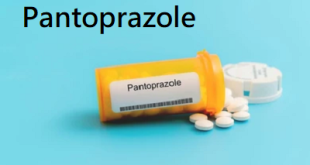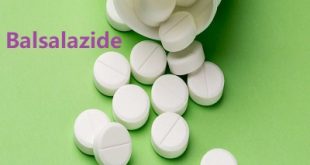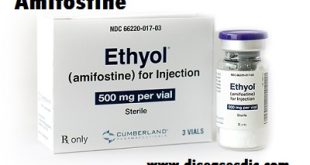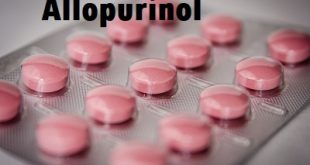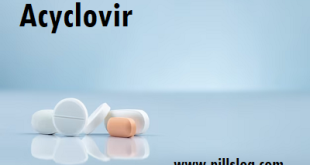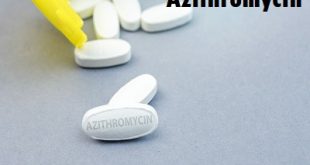Background Pantoprazole is a first-generation proton pump inhibitor (PPI) used for the management of gastroesophageal reflux disease (GERD), for gastric protection to prevent recurrence of stomach ulcers or gastric damage from chronic use of NSAIDs, and for the treatment of pathological hypersecretory conditions including Zollinger-Ellison (ZE) Syndrome. It can also be found in quadruple regimens for the treatment of H. …
Read More »Mechlorethamine -Uses
What is Mechlorethamine? Mechlorethamine (mek” lor eth’ a meen), also known as chlormethine and mustine, is a nitrogen mustard and was the first alkylating agent developed for use as an antineoplastic agent in man. It remains the most reactive in this class of agents. It has been in clinical use for more than 60 years, given systemically in combination with other …
Read More »Baclofen – Side Effects
Description Baclofen is a gamma-aminobutyric acid (GABA) agonist used as a skeletal muscle relaxant. Although originally designed in 1962 to treat epilepsy, baclofen was not effective in treating this condition but instead was shown to reduce spasticity in selected patients. It was reintroduced in 1971 as a treatment for spasticity and was later approved by the FDA in 1977. Baclofen …
Read More »Balsalazide – Uses
Background Balsalazide is an anti-inflammatory drug used in the treatment of Inflammatory Bowel Disease. It is a prodrug of mesalamine which has an inert carrier molecule instead of the sulfapyridine moiety of sulfasalazine. Balsalazide is metabolised by bacterial azo reductases in the colon to release mesalamine. It is an effective first-line agent for patients with ulcerative colitis, both for the …
Read More »Amikacin – Dosing
Background Amikacin is a semi-synthetic aminoglycoside antibiotic that is derived from kanamycin A. Amikacin is synthesized by acylation with the l-(-)-γ-amino-α-hydroxybutyryl side chain at the C-1 amino group of the deoxystreptamine moiety of kanamycin A. Amikacin’s unique property is that it exerts activity against more resistant gram-negative bacilli such as Acinetobacter baumanii and Pseudomonas aeruginosa. Amikacin also exerts excellent activity …
Read More »Amifostine – Effects
Description – Amifostine Amifostine is a broad-spectrum radio- and chemoprotector. It restores transcriptional activity of specific p53 mutants, prevents chemotherapy-induced apoptosis and upregulates HIF-1α. Amifostine offers a selective protection to normal cells over tumor cells due to normal cells having a 275-fold greater concentration of alkaline phosphatase, by reducing renal toxicity, higher pH and better vascularity of the normal tissue. …
Read More »Allopurinol – Uses
What is allopurinol? Patients with large tumor masses, leukemia, or gout sometimes receive allopurinol (also called Zyloprimâ) which is a medicine used to decrease the level of uric acid in the blood. Allopurinol is a xanthine oxidase enzyme inhibitor that is considered to be one of the most effective drugs used to decrease urate levels and is frequently used in …
Read More »Acyclovir – Background
Background Acyclovir is a nucleotide analog antiviral used to treat herpes simplex, Varicella zoster, herpes zoster, herpes labialis, and acute herpetic keratitis. Acyclovir is generally used first line in the treatment of these viruses and some products are indicated for patients as young as 6 years old. Acyclovir was granted FDA approval on 29 March 1982. Brand Names Zovirax, Sitavig, …
Read More »Azithromycin – Uses
Background Azithromycin is a broad-spectrum macrolide antibiotic with a long half-life and a high degree of tissue penetration 3. It was initially approved by the FDA in 1991. It is primarily used for the treatment of respiratory, enteric and genitourinary infections and may be used instead of other macrolides for some sexually transmitted and enteric infections. It is structurally related …
Read More »Acrivastine – Overview
What is Acrivastine? Acrivastine is a triprolidine analog antihistamine indicated for the treatment of allergies and hay fever. As an H1 receptor antagonist, it functions by blocking the action of histamine at this receptor thereby preventing the symptoms associated with histamine release such as pruritis, vasodilation, hypotension, edema, bronchoconstriction, and tachycardia. Acrivastine is currently available in combination with pseudoephedrine as …
Read More » PillsLog.com | Instantly Drugs information Instantly find your pills from our A to Z list Medicines and Prescription Drug information for consumers and medical health professionals.
PillsLog.com | Instantly Drugs information Instantly find your pills from our A to Z list Medicines and Prescription Drug information for consumers and medical health professionals.
